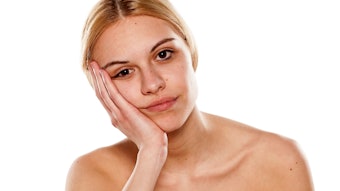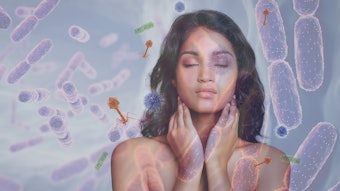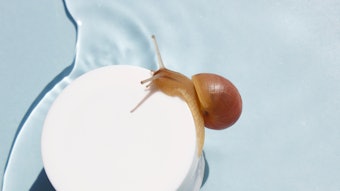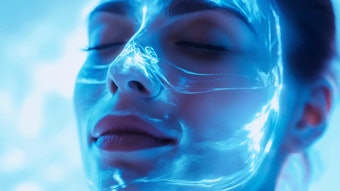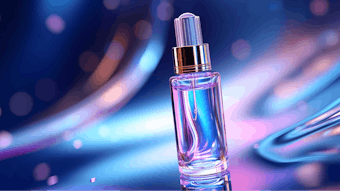Cosmetic acupuncture is as old as traditional Chinese medicine (TCM) and was combined with Chinese herbs when practiced by Imperial concubines and empresses for the attention of the emperor, according to Michelle O’Shaughnessy, DOM, esthetician and founder of the Aesthetic Acupuncture Clinic in Orlando, Fla., USA. Cosmetic acupuncture is said to address skin conditions such as acne, rosacea, dryness, sagging and wrinkles. However, only in recent years has the practice become popular worldwide.
There are three forms of cosmetic acupuncture: Meizen cosmetic acupuncture, facial rejuvenation acupuncture and the acupuncture facelift. These treatments are focused on the principles of TCM, where qi is the vital energy flow in the body. In her book on TCM,1 O’Shaughnessy adds that, “using TCM, signs of deficiency or excess can be found by analyzing different aspects of the body, including the face, the tongue and the paths of energy that travel through the body (meridians). TCM uses treatments like acupuncture, Chinese herbs and dietary recommendations to bring the body back to harmony.”
Yin and Yang Theory
O’Shaughnessy described how skin conditions are addressed through acupuncture points on the body. The body’s meridians are classified as either yin or yang. While yang meridians are connected to hollow organs like the stomach and intestines, yin meridians are associated with solid organs like the liver, spleen or heart.
The locations chosen for needle application depend upon the individual’s skin concern. “Dry skin is a yin deficiency,” said O’Shaughnessy, who added, “yin is responsible for the fluid while yang is responsible for the function of the organs.”
According to O’Shaughnessy, yin dries up with age, resulting in wrinkles, rosacea, dry skin and hyperpigmentation. Conversely, yang deficiency results in pale skin, clogged pores and sagging around the neck and eyelids. “To address the yin deficiency of dry skin, I would target Spleen 6, which is a spot three inches above the ankle, to begin producing fluid in the body,” said O’Shaughnessy, who targets a number of other body points.
The yang organs are believed to be responsible for eliminating waste, which is why O’Shaughnessy targets them to address acne. “When I do acupuncture for acne, I want to drain the body of dampness to take the puss out by targeting the large intestine meridian,” said O’Shaughnessy. She also removes excessive heat to reduce inflammation.
Rosacea is also considered a yang deficiency. “Rosacea is a result of excess candida [or fungi], so I would target the stomach to draw the redness out,” said O’Shaughnessy. She adds that she does not administer accupuncture to the face for those with acne for obvious reasons.
Acupuncture and Aging
According to O’Shaughnessy, wrinkles and sagging can be reduced with strategically placed needles and take 5–10 years off of an individual’s face.
“When I create microtrauma to the dermis, I am stimulating the fibroblasts to make collagen and elastin,” explained O’Shaughnessy.
She creates this trauma by “threading the lines,” or placing a series of needles directly into the wrinkle to produce a “thread” of collagen. Other areas threaded to reduce wrinkles include the nasolabial fold.
O’Shaughnessy also places needles in areas of the face to stimulate blood flow and increase circulation of oxygen, reportedly “resulting in a younger-looking complexion.” She finds that the eye area especially benefits from cosmetic acupuncture due to its lack of blood and oxygen.
Topicals and Acupuncture
A cosmetic acupuncture procedure is not complete without topical skin treatment, according to O’Shaughnessy. Most treatments begin first with a cleanser, followed by a peel. Once the acupuncture is complete, a facial mask is applied, the ingredients of which vary by skin condition but often involve Chinese herbs.
O’Shaughnessy uses paprika in the mask if the individual has bad circulation. “A cayenne pepper mask increases circulation to the face,” she said. If the patient is dehydrated, O’Shaughnessy often applies a collagen fleece mask. Dang gui, known commonly as angelica root, is applied to the skin of those with acne. According to O’Shaughnessy, a mix of dang gui and other herbs helps to stop the infection. “Dang gui invigorates circulation and pushes the garbage out of the skin.” Other common ingredients she uses in masks include goji berries, for their antioxidant content, and ginseng for its amino acid content.
When customers leave her clinic, O’Shaughnessy arms them with a dietary plan and advises them to follow a healthy skin care regimen, which O’Shaughnessy believes can be improved with cosmetic acupuncture. “The increased circulation and oxygen in the face will [also] increase the efficacy of skin care products.”
References
1. M O’Shaughnessy, Nourish Your Skin & Body with Traditional Chinese Medicine, Carol Stream, IL: Allured Business Media (2009)


